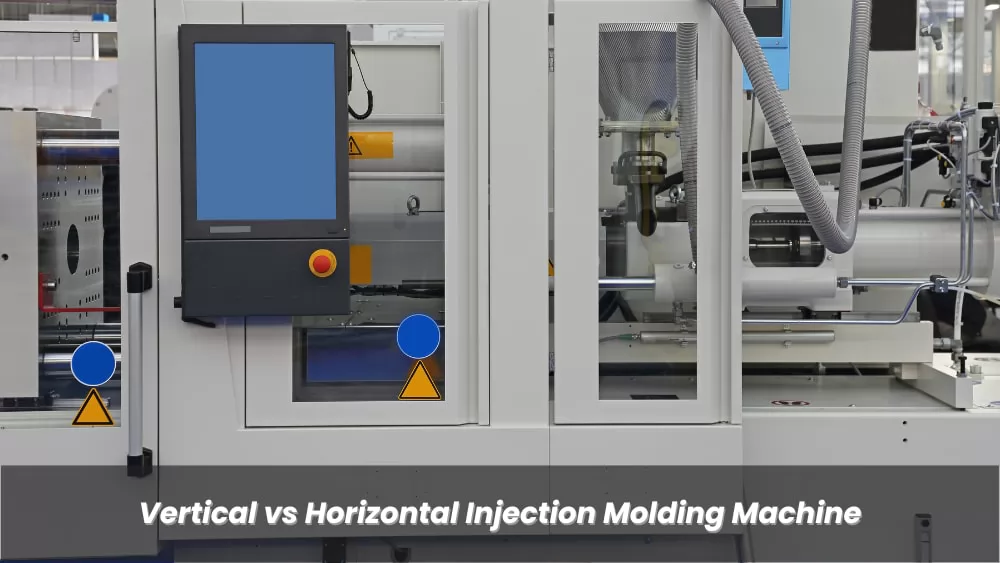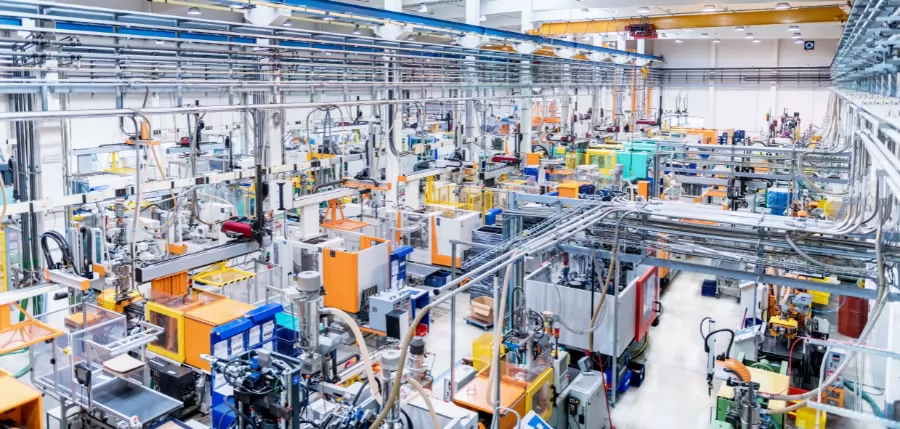
When it comes to injection molding, the choice between a vertical and a horizontal injection molding machine can significantly impact your production efficiency, space utilization, and overall output. Both types have their distinct advantages and are suited for different applications. Understanding the key differences and benefits of each can help you make the best decision for your manufacturing needs.
What is a Vertical Injection Molding Machine?
Vertical injection molding machines are a type of machinery used in the manufacturing industry to produce a variety of plastic parts. These machines are distinct in their design and operation, with a vertical clamping unit and an injection unit that injects molten plastic vertically into the mold. This setup allows for efficient use of space and is particularly well-suited for applications requiring insert molding, where pre-formed parts are placed into the mold before plastic is injected.
One of the main advantages of vertical injection molding machines is their ability to handle complex molding processes with high precision. They are commonly used in industries where space constraints are an issue or where parts need to be molded around other components, such as in the production of electrical connectors, medical devices, and automotive parts.
Price Range: $6,000 to $20,000+
What Is a Horizontal Injection Molding Machine?
Horizontal injection molding machines are the more traditional and widely used type of injection molding equipment. As the name suggests, these machines have a horizontal clamping unit and an injection unit that injects molten plastic horizontally into the mold. This configuration is ideal for producing a wide range of plastic parts with high efficiency and consistency.
One of the key advantages of horizontal injection molding machines is their ability to produce large quantities of parts quickly. They are designed for high-speed operation and can accommodate multiple cavities within a single mold, allowing for the simultaneous production of several parts. This makes them particularly suitable for high-volume manufacturing in industries such as packaging, consumer goods, and automotive components.
Price Range: $8,000 to $30,000+
The Difference Between Vertical Vs Horizontal Injection Molding Machines
When comparing vertical and horizontal injection molding machines, the primary difference lies in their design and operation. Vertical machines inject plastic vertically, while horizontal machines inject plastic horizontally. This fundamental difference impacts various aspects of the molding process, including space requirements, ease of insert placement, and suitability for specific applications.
| Criteria | Horizontal Injection Molding Machine | Vertical Injection Molding Machine |
|---|---|---|
| Volume of Production | High volume, ideal for large-scale manufacturing. | Lower volume, suited for specialized or smaller production runs. |
| Machine Weight | Heavier and sturdier, supports large molds and heavy parts. | Lighter and more compact, ideal for smaller, precise components. |
| Working Principle | Horizontal alignment, optimized for high-speed, automated production. | Vertical alignment, gravity-assisted, excellent for insert molding. |
| Price | Generally higher initial investment, offset by high output. | Lower initial cost, better for specialized applications or space-constrained facilities. |
| Output Capacity | High output, continuous operation, ideal for mass production. | Focuses on precision and quality, especially with inserts. |
| Best For | Large parts, high-volume, automated production. | Insert molding, precision tasks, space-limited environments. |
Vertical vs Horizontal Injection Molding Machine: Difference in Volume
When considering the volume of parts that can be produced, horizontal injection molding machines typically have an advantage.
- Horizontal Machines: Due to their larger clamping force and more extensive mold space, horizontal machines can handle higher volumes of production, making them ideal for large-scale manufacturing operations.
- Vertical Machines: Vertical machines are often used for smaller, more specialized production runs. They are particularly effective for low-volume runs involving complex inserts or over-molding processes.
Vertical vs Horizontal Injection Molding Machine: Difference in Weight
The weight of the machines themselves and the weight capacity they can handle differ between vertical and horizontal models.
- Horizontal Machines: Tend to be heavier and sturdier, capable of supporting large molds and heavy parts. This makes them suitable for producing bigger components, such as automotive parts or large household items.
- Vertical Machines: Generally lighter and more compact, vertical machines are designed for smaller, lighter parts. However, they can still handle complex, high-precision tasks, particularly in insert molding.
Vertical vs Horizontal Injection Molding Machine: Difference in Working Principle
The working principle of vertical and horizontal injection molding machines is influenced by their design orientation.
- Horizontal Machines: In a horizontal machine, the injection unit and mold clamping unit are aligned horizontally. This design is optimal for high-speed, high-volume production and is well-suited for automation.
- Vertical Machines: The vertical orientation allows gravity to assist in the molding process, particularly in insert molding applications. This makes vertical machines ideal for tasks where precision is key and inserts must be positioned accurately within the mold.
Vertical vs Horizontal Injection Molding Machine: Difference in Price
Price is a significant factor when choosing between these two types of machines.
- Horizontal Machines: Typically more expensive due to their larger size and higher production capacity. The initial investment can be substantial, but this is often offset by higher output and faster cycle times.
- Vertical Machines: Generally less expensive upfront, making them a cost-effective choice for specialized applications, smaller production runs, or facilities with limited space.
Vertical vs Horizontal Injection Molding Machine: Difference in Output
Output capacity is another critical difference.
- Horizontal Machines: Known for their high output, horizontal machines are ideal for mass production. Their design supports continuous operation with minimal downtime, making them highly efficient for large-scale production.
- Vertical Machines: While vertical machines may not match the output volume of horizontal machines, they excel in producing high-precision parts, particularly when dealing with inserts. Their output is more focused on quality rather than quantity.
Should I Choose a Vertical or Horizontal Injection Molding Machine?

The decision between a vertical and horizontal injection molding machine should be based on your specific production needs:
-
Choose a Horizontal Machine if:
- You need to produce large volumes of parts quickly.
- Your products are large or require high clamping forces.
- Your facility is equipped to handle the larger size and weight of horizontal machines.
- Automation is a key part of your production process.
-
Choose a Vertical Machine if:
- Your production involves insert molding or over-molding.
- You have space constraints and need a more compact machine.
- Precision and quality are more critical than sheer output volume.
- Your budget is limited, and you need a cost-effective solution.
Conclusion
In short, the horizontal injection molding machine is more suitable for large-scale production lines. On the contrary, you can use it to make a variety of things at home because it is easy to install and operate if you want to make a lot of molds with different shapes. So, I believe that it will give you a better effect with the horizontal injection molding machine.
We are a professional horizontal injection molding machine manufacturer that can provide high-quality injection molding machine products for your project. If you need our help, please tell us what your detailed requirements are. Our team of engineers will provide you with professional advice and guidance!
You can directly visit our official website to view the latest horizontal injection molding machine products.



